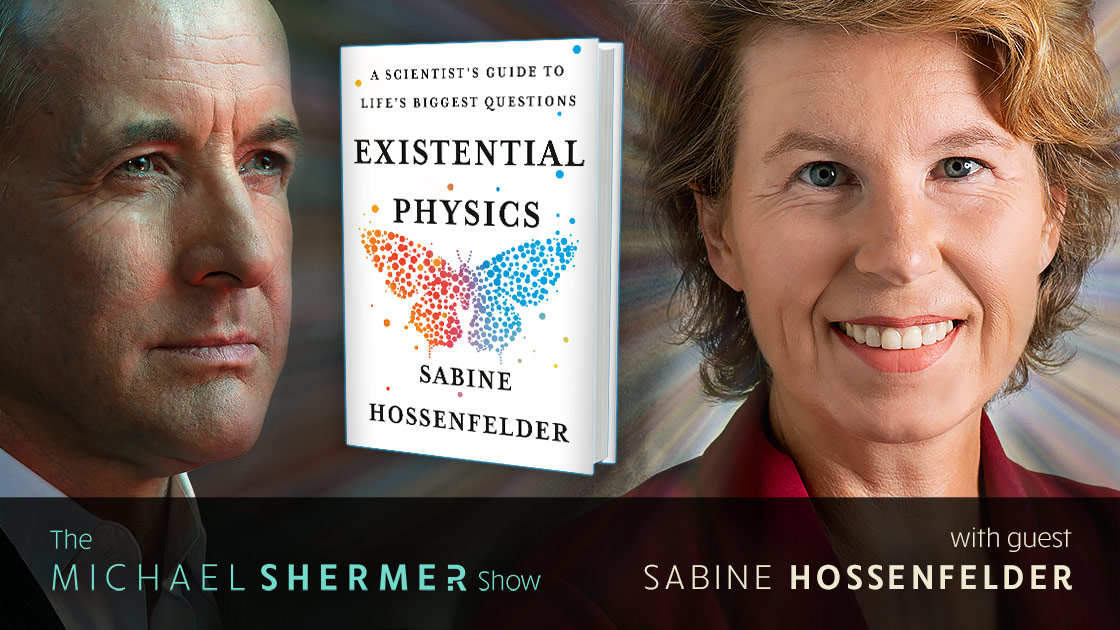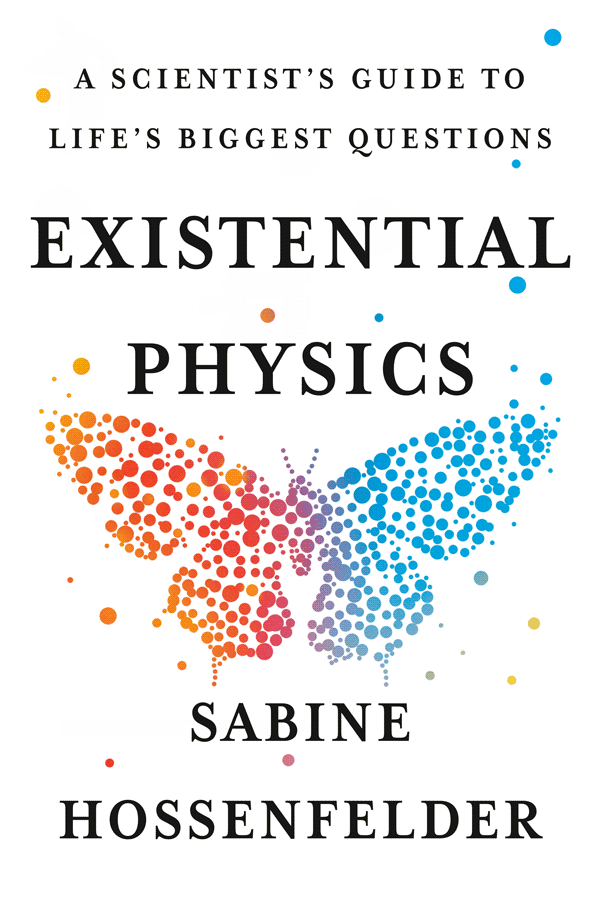What is time? Does the past still exist? How did the universe begin and how will it end? Do particles think? Was the universe made for us? Why doesn’t anyone ever get younger? Has physics ruled out free will? Will we ever have a theory of everything? According to Sabine Hossenfelder, it is not a coincidence that quantum entanglement and vacuum energy have become the go-to explanations of alternative healers, or that people believe their deceased grandmother is still alive because of quantum mechanics. Science and religion have the same roots, and they still tackle some of the same questions: Where do we come from? Where do we go to? How much can we know? The area of science that is closest to answering these questions is physics. Over the last century, physicists have learned a lot about which spiritual ideas are still compatible with the laws of nature. Not always, though, have they stayed on the scientific side of the debate.
Shermer and Hossenfelder also discuss: theories of everything • quantum flapdoodle • Is math all there is? Is math universal? • Uniformitarianism and the laws of nature • theories of aging • Emergent properties, or why we are not just a bag of atoms • Is knowledge predictable? • Free will and determinism from a physicist’s perspective • Do copies of us exist? Could they ever? • Consciousness and computability • Does the universe think? • Why is there something rather than nothing? • What is the purpose of life, the universe, and everything?
Sabine Hossenfelder is a research fellow at the Frankfurt Institute for Advanced Studies, Germany, and has published more than eighty research articles about the foundations of physics, including quantum gravity, physics beyond the standard model, dark matter, and quantum foundations. She has written about physics for a broad audience for 15 years and is the creator of the popular YouTube channel “Science without the Gobbledygook.” Her writing has been published in New Scientist, Scientific American, the New York Times, and the Guardian (London). Her first book, Lost in Math: How Beauty Leads Physics Astray, appeared in 2018.
About the Book
Not only can we not currently explain the origin of the universe, it is questionable we will ever be able to explain it. The notion that there are universes within particles, or that particles are conscious, is ascientific, as is the hypothesis that our universe is a computer simulation. On the other hand, the idea that the universe itself is conscious is difficult to rule out entirely.
In this lively, thought-provoking book, Hossenfelder takes on the biggest questions in physics: Does the past still exist? Do particles think? Was the universe made for us? Has physics ruled out free will? Will we ever have a theory of everything? She lays out how far physicists are on the way to answering these questions, where the current limits are, and what questions might well remain unanswerable forever. Her book offers a no-nonsense yet entertaining take on some of the toughest riddles in existence, and will give the reader a solid grasp on what we know—and what we don’t know.
Notes from the Discussion
Albert Einstein on the death of his friend Michele Besso in a letter to the family: “Now he has departed from this strange world a little ahead of me. That means nothing. For us believing physicists the distinction between past, present, and future only has the meaning of an illusion, though a persistent one.”
Sir Martin Rees’s Just Six Numbers
- Ω (omega), the amount of matter in the universe = 1: if Ω were greater than 1, it would have collapsed long ago, and, if Ω were less than 1, no galaxies would have formed.
- ε (epsilon), how firmly atomic nuclei bind together = 0.007: if ε were even fractionally different, matter could not exist.
- D, the number of dimensions in which we live = 3.
- N, the ratio of the strength of electromagnetism to that of gravity = 1039: if N were smaller, the universe would be either too young or too small for life to form.
- Q, the fabric of the universe = 1/100,000: if Q were smaller, the universe would be featureless, and, if Q were larger, the universe would be dominated by giant black holes.
- λ (lambda), the cosmological constant, or “antigravity” force that is causing the universe to expand at an accelerating rate = 0.7: if λ were larger, it would have prevented stars and galaxies from forming
If you enjoy the podcast, please show your support by making a $5 or $10 monthly donation.
This episode is sponsored by Wondrium:
This episode was released on August 23, 2022.











